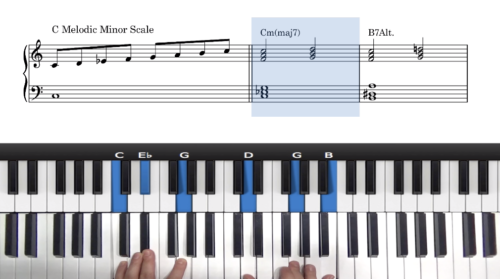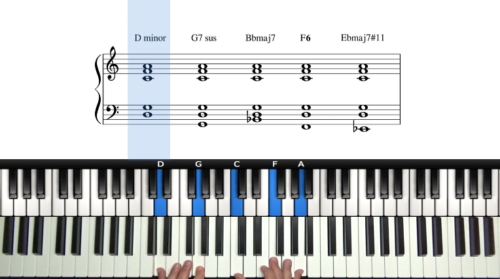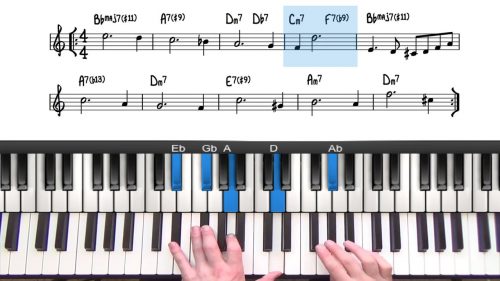Triad Options
In this lesson, Jovino looks in detail at various triad options available for use over major, minor, dominant and diminished chords.
He shows that by focussing only on scales we restrict our melodic and harmonic imagination but by using triads we can open our ears to strong melodic possibilities that are not obvious when we improvise using scales.
Lesson Downloads
-
Triad Options Lesson Notation File Type: pdf
Practice Tips
-
Apply these ideas to your favourite tunes and try to open up new avenues of improvisation through using triads.
-
Explore the sonorities of each triad over a given chord or root note. Each triad option will have its own colour and feel and it's helpful to be familiar with as many as you can.
-
Try searching for some more "outside" sounds with triads, such as an Emaj triad over Cmaj7.






Incredible lesson! Very liberating. Thank you!
Thanks Zyah, we’re glad you enjoyed the lesson.
If you have any questions with the material you can ask us here, or in the forum area: https://www.pianogroove.com/community/
Enjoy the rest of this course!
Cheers,
Hayden
Great lesson. I have a question.
Why are the D and Bm triads formed from degrees of the Cmaj7 chord- I’m thinking in particular about the f sharp? Is that because you are using all the notes from the extended C Maj 7 chord- i.e. including the sharpened 11th? Is it correct then to think of the D triad as made up of the 9th, Sharpened 11th and 13th of the C Maj7 Chord? Would it be correct to think of the Bm triad as made up of the 7th, 9th and Sharpened 11th of C Maj7 Chord?
Hi Richard,
Apologies for the late reply here.
When playing a major chord, we can play the Lydian Mode which is the major scale with the #11 instead of the natural 11.
So the C Lydian mode would be C-D-E-F#-G-A-B-C
If you play this scale over a C Major chord in your left hand, you will hear that it has a more uplifting and mysterious quality. In particular, the #11 has a very uplifting quality over the harmony below.
The natural 11th (F) clashes against the major 3rd (E) in the C major scale because there is a half step interval between these 2 notes.
But when we sharpen the 4th or 11th, we remove that half step interval and we have a much more free flowing scale.
Then when we harmonise the notes of the C Lydian Mode in triads, we get the D Major Triad, and the B Minor Triad.
Of course this works for all major scales, and not just the C Major scale.
Jovino discussed this concept in his recent live session, you can check that out here: https://www.pianogroove.com/jovino-live-event-improvisation/ – in particular watch from around 20m45s in the recording where Jovino introduces the Lydian Concept and demonstrates with the C Major Scale.
Hope this helps Richard, and let me know if you have any further questions.
Cheers, Hayden
Hayden,
Your explanation helps solidify the concept Jovino talks about.
<>
Taking that concept further, I would reason this helps explain why Jovino can use the D Major triad to do improvisation since the D major scale contains C# which is a whole step away from B that allows for some interesting harmonic improvisation.
In the first example above a g triad is being played over the c major. Does this mean the g triad notes plus all extensions, the g scale or other notes from some other source? What is being excluded? I wish that a few examples would be transcribed to clarify this issue. Thanks